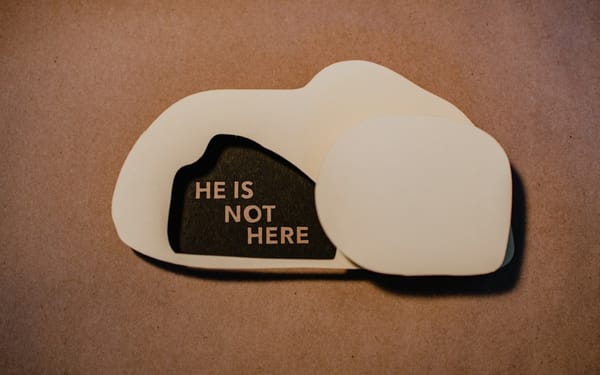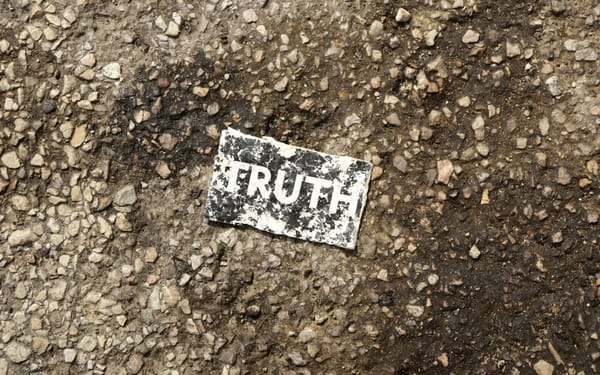Why We Need More Farmers and Fewer Fighters
Every healthy relationship and society requires both fighting for what matters and farming what sustains. The key is knowing when to do which.

In ancient civilizations, young men spent the bulk of their years in one of two occupations: fighting or farming. Think of the opening words of Gladiator, where Maximus sits atop his horse and declares to his troops, “Three weeks from now, I will be harvesting my crops. Imagine where you will be, and it will be so.”
Men planted, fought, and hoped to harvest. Men and women alike understood they had to spend a certain percentage of their lives fighting for their ideas and a certain percentage building what would hopefully sustain them and future generations. Ideally, the ratio of fighting to farming was disproportionate. Too much fighting resulted in certain death; ideally, one spent most of their existence in peace, tending their fields and making an honest living.
Today, most citizens in the world do not operate with a plow and sword, but the metaphor of farming and fighting applies—especially within the context of relationships. Just like any healthy civilization, every great relationship requires a mixture of farming and fighting (I mean this strictly in a metaphorical sense).
In fact, the sign of a relationship that has grown cold is when no fight remains. It’s the individual who is apathetic when they discover their partner has had an affair. What has happened? The fire in the relationship has gone out (probably long ago), and there is no desire to reconcile. This is why relational apathy is often a stronger indicator of relational deterioration than fight. When we cease to care, we cease to love.
Fighting is part of what holds a society together. Fighters are often the impetus for change. When others remain silent, they elevate those who are suppressed and war against injustice. They’re the Nelson Mandelas that stand against apartheid, Elizabeth Stantons who lobby for women’s rights, Christine Caines that fight against human trafficking, and Abby Johnsons that fight for the rights of the unborn.
But there are several points about fighting that should be clarified, especially when we think through the lens of investing in diverse relationships.
Not Every Battle is Ours to Fight
First, every fighter needs to make sure they’re fighting the right battle. Just as a commander should not engage in every skirmish, so there are some battles that are not ours to fight. Not every good cause should be our cause.
The world is a complicated place and the problems in each community are very different. When I lived in Toronto, the average resident couldn’t understand someone who would consider voting Republican. In rural Idaho, the average resident can’t understand how someone could ever vote for a Democrat. Why? Many reasons, but one of them is that the issues in one community are very different from another.
Believe me, I’ve felt the tug to fight a lot of battles. Part of this is natural and good. But I also recognize that I can only be effective in a few areas. This means I’ll fight in a few areas, and support others who fight in others.
We Must Draw a Line Between Fighting and Farming
Another major problem is the lines between farming and fighting are all but destroyed. Let’s use a battlefield example. Because we live in a technologically advanced society, the transition between sitting at home with friends and fighting an enemy can be almost instantaneous. In Karl Marlantes’ What It Is Like to Go to War, he writes about the psychological toll this can take on a soldier.
In Vietnam we put people on airplanes and had them returning from combat in some cases in only a matter of hours. Today a soldier can go out on patrol and kill someone or have one of his friends killed and call his girlfriend on his cell phone that night and probably talk about anything except what just happened. And if society itself tries to blur it as much as possible, by conscious well-intended efforts to provide “all the comforts of home” and modern transportation and communication, what chance does your average eighteen-year-old have of not becoming confused?[1]
As I read this paragraph, I thought of my friends who have served in the military, and the tremendous mind warp situations like this create. In the past, you went away to battle. You traveled with your army, fought, and then came home. Unless one was defending their homeland, there was a clear line of demarcation between fighting and farming. The two did not cross paths.
Now, it’s different. Today, a Marine arrives home, and the scenes of warfare are on every news channel. They can’t escape it and feel compelled to answer questions from well-meaning individuals who only understand war from a TV screen.
What This Means for Relationships
In a relational sense, this blend between farming and fighting has also shifted. A few hundred years ago, global affairs were not the common person’s concern. What mattered was day-to-day survival. One thought of the challenges they, their community, and possibly their nation faced.
Today, we’re able to look at every injustice in the world and have no shortage of battles to fight. On a macro level, much of this is good because more awareness has been a catalyst for global change. But on an individual level, viewing the worst of humanity on our screens acclimatizes us to those injustices we should be doing something about and scatters our responses so that we aim at everything and impact nothing.
To combat this, we need to create more margin and a clear set of priorities. Strategically pick a few areas where you need to fight, but then make sure you create time for farming.
Build a strong family. Develop strong friendships. Build an inheritance to leave to your kids. Spend less time arguing on social media.
[1] Karl Marlantes, What It Is Like to Go to War (New York: Grove Atlantic, 2011), 19.





